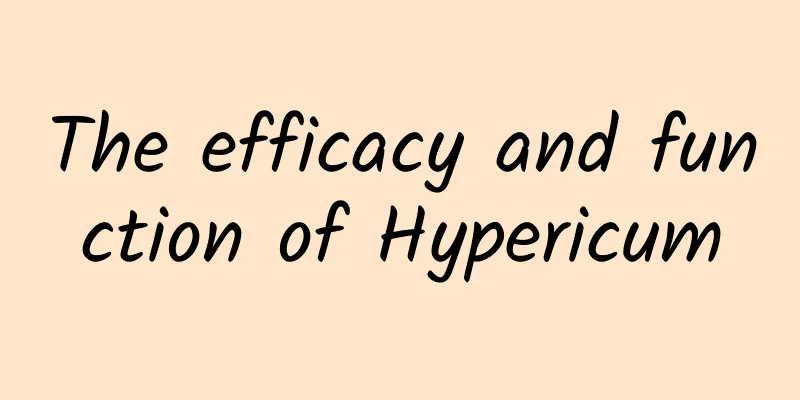The efficacy and function of eucalyptus leaves

|
The traditional Chinese medicine eucalyptus is already very familiar to most people. But in fact, not many people know the effects and functions of the traditional Chinese medicine eucalyptus, so let’s talk about it below. [Other names] Eucalyptus leaves (Modern Practical Chinese Medicine), Eucalyptus globulus leaves (Guangxi Chinese Materia Medica). [Source] It is the leaves of Eucalyptus globulus , a plant of the Myrtaceae family. It can be harvested throughout the year. Pick the old leaves and dry them in the shade or use them fresh. [Original form] Eucalyptus globulus, also known as: gray willow, jade tree, small ball walnut, blue oil wood, poplar fruit peach, gray leaf eucalyptus. [Cultivation] It is cultivated in southern and southwestern my country. [Properties] Dry eucalyptus leaves are sickle-lanceolate, 12 to 30 cm long, 2 to 7 cm wide, leathery and thick, with a pointed tip, asymmetrical base, entire margin, yellow-green on the upper side, smooth and hairless. When viewed in sunlight, numerous small transparent glandular dots and a large number of reddish-brown cork spots can be seen. Pinnately venated; petiole 1-3 cm long, flat and twisted. It has a slight aroma and tastes cool and slightly bitter. Produced in Sichuan, Yunnan, Guangdong, Guangxi and other places. [Chemical composition] The leaves contain 0.92-2.89% volatile oil, the main components of which are 1,8-cineole, pinene, citronellal, carveol and 1-acetyl-4-isopropylcyclopentene. It also contains rutin, quercetin, quercetin, L (+) -homoserine, and eucalyptol. [Pharmacological action] A substance was separated from eucalyptus globulus by column chromatography, which has an inhibitory effect on Gram-positive bacteria and has a detoxifying effect on tetanus and diphtheria toxins in test tubes. After subcutaneous injection of 0.2 mg/kg of this substance into rabbits, no toxic reaction was observed within two weeks. The water extract of eucalyptus leaves can inhibit the oxygen consumption and succinate dehydrogenase activity of Staphylococcus aureus and Salmonella paratyphi. This inhibitory effect is not related to the Gram reaction, but is proportional to the concentration of the drug solution. Eucalyptus oil extracted from eucalyptus globulus can fight tuberculosis bacteria in test tubes at a concentration of more than 6%, and has a certain therapeutic effect when used (inhalation or tracheal instillation) in more than 10 patients with pulmonary tuberculosis. Eucalyptus globulus leaf extract and eucalyptus oil can be used as inhalers for respiratory diseases, especially upper respiratory tract infections; they have an expectorant effect after oral administration in patients with chronic bronchitis, and can be taken orally or inhaled in cases of asthma. Eucalyptus oil and eucalyptus globulus leaf extract can also be used to treat certain skin diseases and as flushing agents for wounds, ulcers, and fistulas. Eucalyptus oil has a hookworm-repelling effect when taken internally, its tannic acid has a mild astringent property, and its volatile oil has a carminative effect. The volatile oil is absorbed from the digestive tract and partially excreted through the respiratory tract. In addition, eucalyptus oil can be used as a deodorant and analgesic for patients with neuralgia. Some people believe that eucalyptus leaves have local anesthetic effects. [Toxicity] There have been 29 cases of eucalyptus oil poisoning reported, including 7 deaths. The minimum lethal dose is only 3.5 ml, but some people have recovered after taking 30 ml. Symptoms of poisoning include a burning sensation in the upper abdomen, nausea, vomiting, dizziness, fatigue, pale or cyanotic skin, cold limbs, a rapid and weak pulse, drowsiness, and even delirium and convulsions. The patient's breath has a strong odor of eucalyptus oil, which can last for 1 to 2 days, and sometimes the odor is also in the urine and feces. Common doses may also cause dermatitis in some sensitive patients. 【Nature and flavor】 Bitter, pungent, cool. [Functions and indications] Treat colds, influenza, dysentery, enteritis, joint pain, cystitis, burns, scabies, erysipelas, neurodermatitis, eczema, carbuncles and swelling. [Usage and Dosage] For oral use: decoct in water, 3 to 8 qian. For external use: decoct in water for washing, grind into powder and sprinkle or boil into paste for application. [Additional prescription] ①Treatment of enteritis and diarrhea: eucalyptus leaves, purslane, ground ivy, and tea leaves. Take it as a decoction. 【Clinical application】 ①Prevention of measles [Remarks] The root bark of this plant (Eucalyptus globulus root bark) is also used for medicinal purposes, please refer to the separate article for details. 【Excerpt】 《*Dictionary》 [Source] From Li Chenghu's "Pharmacognosy" Through the detailed introduction above, we have a good understanding of the efficacy and functions of the traditional Chinese medicine eucalyptus. I hope this can be helpful to everyone. |
<<: The efficacy and function of Fengteng
>>: The efficacy and function of spring flower wood
Recommend
A great battle of the Winter Olympics gods, one picture teaches you how to distinguish all events!
Mixed Knowledge Specially designed to cure confus...
The efficacy and function of blister beetles
Speaking of blister beetles, many people know tha...
Geranium rubrum
Geranium is a natural woody plant, also called cr...
The efficacy and function of witch hazel
Witch hazel has a long history, and up to now, wi...
What are the medicinal values of apricot flowers?
Although apricot flowers are bitter, they have ma...
The efficacy and function of Haibai Stone
Haibai stone is a traditional Chinese medicine. T...
It's not that you can't afford to drink alone, but tea is more cost-effective! The ancients' sense of ritual began with drinking tea
In daily life, do you prefer to make a cup of hot...
Effects and efficacy of Astragalus injection
Astragalus is a very important traditional Chines...
The effect of Mashan
Masihan should be a dialect term, referring to pu...
The quickest way to lose weight: Can you lose weight immediately by just lying down?
What efforts have you made to become thinner and ...
The efficacy and function of white pomegranate flowers
White pomegranate flower is a familiar medicinal ...
The efficacy and function of cat placenta
Speaking of cat placenta, many people know that i...
Meteorological satellite images contain the latest technology for predicting disasters!
Not long ago, typhoons Dusurui and Kanu hit one a...
How long can Panax notoginseng powder be stored?
All medicinal materials have a shelf life, and Pa...
The folk saying "If there are five trees in the yard, your descendants will always be rich" refers to which trees? What is the reason?
Since ancient times, people have been particularl...









